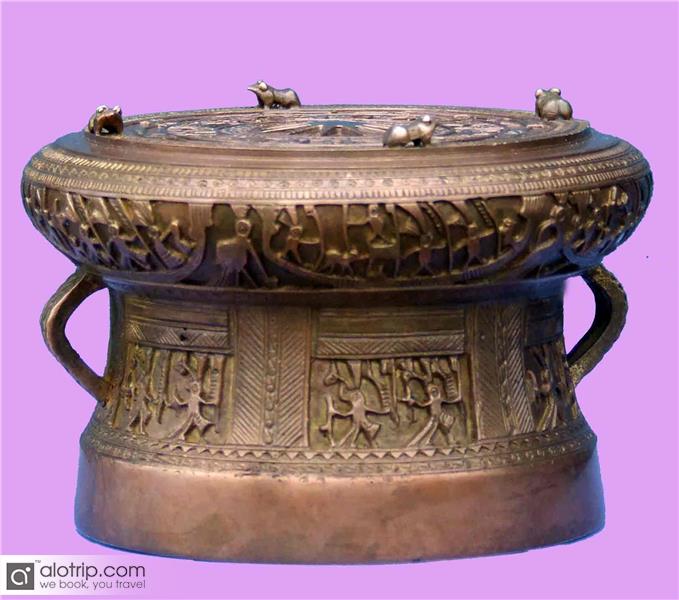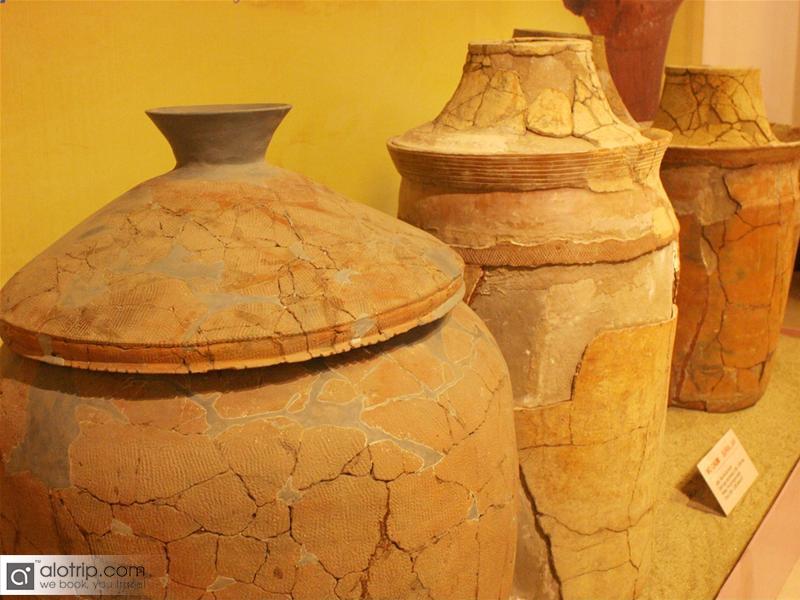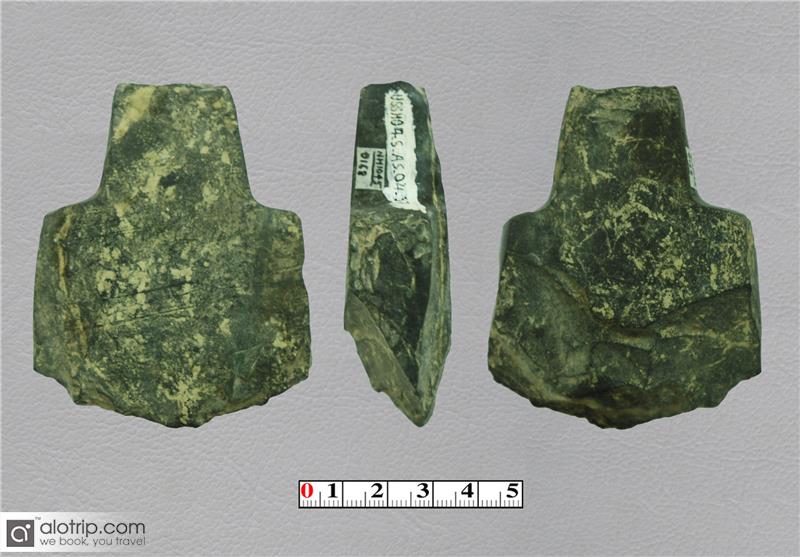The territory of Vietnam history was formed for a long time ago before the presence of humans. However, about 500 thousand years ago, in the middle of Pleistocene period, according to recent archaeological studies, the first human appeared in Northern Vietnam. Many fossils of teeth of Early Homo Sapiens and animals were found under deep sediment in Tham Khuyen, Tham Hai caves in Lang Son. This shows that Vietnam is one of the living areas of human beings in the world.
Experiencing for over thousands of generations from herd life to clan society with activities of hunting and gathering to survive, ancient Vietnamese had improved their skill of hands, ability of thinking and speaking by using stones available in nature to create stone tools to change the quality of life. It is the time from when period of the basis of Vietnamese culture started. This culture lasted until the presence of Hung Kings Empire that gave birth to two greater achievements in Vietnamese history: Red River Civilization, and primitive states as Van Lang and Au Lac.

In prehistory, Vietnam was in the center of Southeast Asia, exchanging beyond the region in both land and sea. Cultures of Vietnam prehistory had experienced a long period of cultural development before ancient civilization appeared (from the first millennium B.C or late Neolithic period). In this time, there was a common culture for all residents in Southeast Asia. Agriculture was the main model for survival, as it matched the natural conditions in Asia. The culture is a characterized complex of rice culture with three elements: mountainous culture, plain culture, and aquaculture in which the second one plays as the key role. Vietnam is a mini Southeast Asia that includes all peoples in current Southeast Asia. Evidences of archeologists and paleoanthropologists show that Vietnamese culture belongs to prehistory period, namely, Nui Do Culture, Son Vi Culture, Hoa Binh Culture, and Bac Son Culture.
Nui Do Culture (in Thanh Hoa) belonging to Stone Age began from tens of thousands years ago and lasted until ten thousand years ago. A number of stripped pieces, rough spearheaded cutting tools made of basalt bedrock found in this area point out that traces of prehistoric humans used these tools for hunting, cutting or fighting against enemies. The movement in using tools shows that prehistoric people had extracted from animal life. The late Stone Age witnessed a Son Vi Culture starting in Phu Tho. This culture lasted for about 20,000-15,000 years B.C. Son Vi Culture was widely distributed with hundreds of relics which were discovered in the northern Vietnam. Tools in Son Vi Culture were made of pebbles and stones with a meticulous carving technique which can perform more functions than that of the previous period. Appearing in about 12,000 – 7,000 years B.C, Hoa Binh Culture (or Hoabinhian) gave birth to primitive agriculture. This culture is famous for technique of creating tools from stones in New Stone Age (Neolithic Age) in Vietnam. This technique was also used widely in south of China and Southeast Asia. The sophisticated technique was also proved through evidences of pottery of this culture. Belonging to Neolithic Age, Bac Son Culture lasted from 11,000 to 7,000 years ago. Along with Hoa Binh Culture, Bac Son Culture set up the first opening stage of Neolithic Revolution. In late New Stone Age, almost primitive tribes focused on planting rice which marked a great change of lifestyle from exploitation to production. They entered period of cultural creativity, which formed the earliest center of agriculture based stone tools in the world.
In 4000 years B.C, ancient Vietnamese people living from Red River valley to Dong Nai River valley entered Iron Age. In this period, there were three main cultures in Vietnam including Dong Son Culture (in Northern Part), Sa Huynh Culture (in Middle Part), and Dong Nai Culture (in Southern Part).

Dong Son Culture was born in period of Van Lang (later Au Lac), the first nation of ancient Vietnamese people. In this culture, technique of producing bronze tools was in advanced level in comparison to the contemporary level in the world. Dong Son Bronze Drum is typically an accomplishment of Dong Son Culture. The process of formation and development of the Dong Son Culture - Red River Civilization in the north formed the origin of ancient Vietnamese people and their first state. This is a united culture of various ethnic groups. Dong Son Culture is significantly characteristics of wet rice agriculture.

Sa Huynh Culture is considered the cradle of Cham people and Cham Empire. Sa Huynh Culture is the product of rice agriculture combining with exploiting forest and marine resources, and developing crafts. Meanwhile, Dong Nai Culture is the foundation of Oc Eo Culture in Southern Vietnam in the early centuries A.D. Oc Eo Culture has an association with the Kingdom of Funan, a state existing from the 2nd century to the 7th century in Mekong Delta. Dong Nai Culture is the cultural result of residents operating major economic activities as agriculture and crafts.

The peak of Vietnam culture foundation progress is Dong Son Culture, Sa Huynh Culture and Dong Nai Culture. They are also the culmination of Southeast Asian culture, and Eastern Indochina Peninsula. The three different cultures developed in the mutual interaction and relationship, simultaneously associating with other cultures in the region to become three major civilizations in Southeast Asia. Thus, before being dominated by Chinese feudal dynasties, Vietnam had existed such an ancient civilization. It can be explained why national consciousness of the Vietnamese was formed early, with having a great power not to be assimilated by Han people, but be capable of perceiving Chinese culture in the process of building later autonomic Dai Viet (Great Viet Land).
